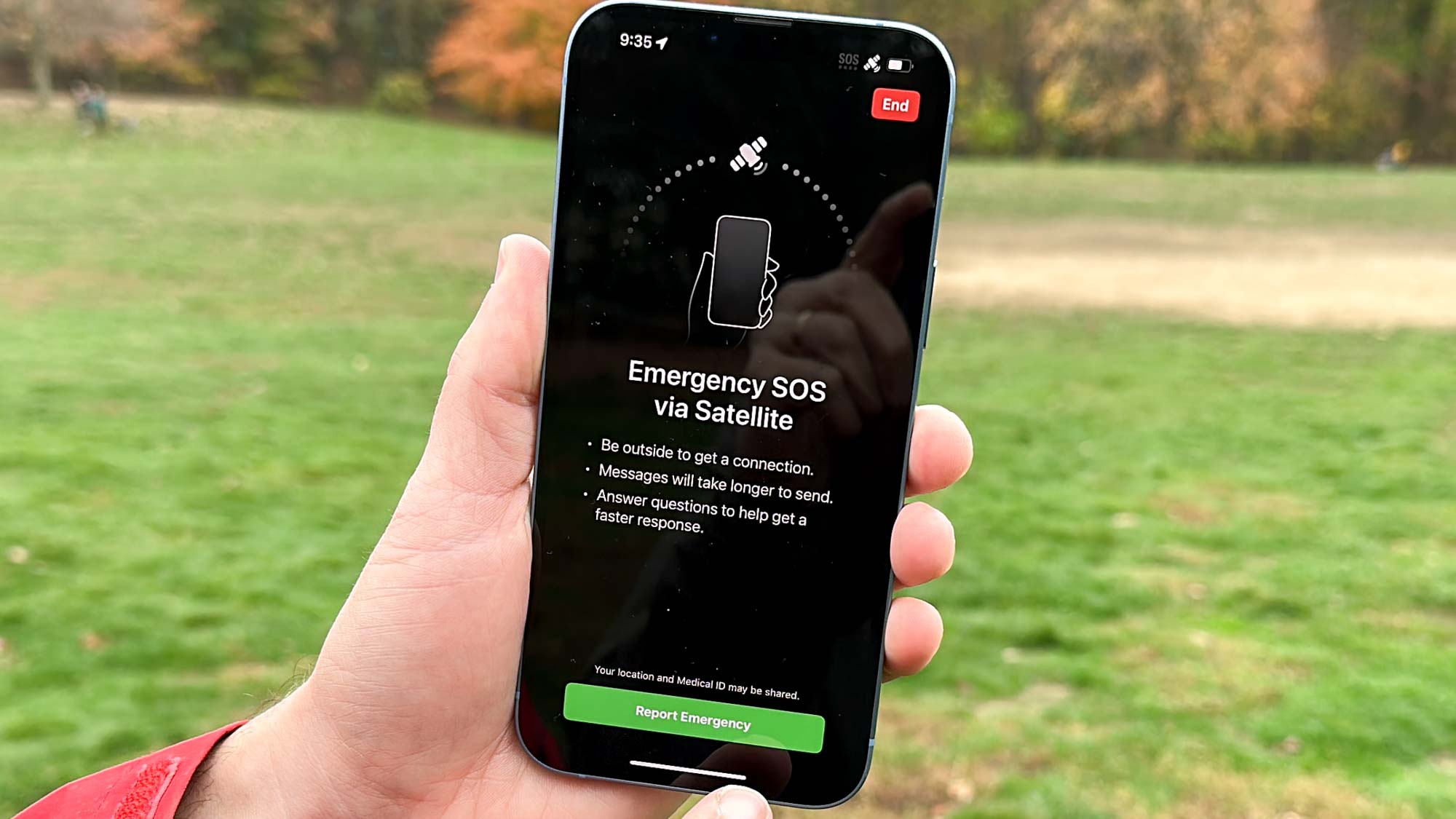iPhone’s satellite connectivity tipped for an upgrade — what does this mean for iPhone 15?

The iPhone 14 saw satellite connectivity come to Apple’s smartphone, in the form of the Emergency SOS via satellite feature. The iPhone 15 may be set to expand upon that, with one of its partners hinting that additional satellite-centric features could be on the way.
Globalstar, Apple’s partner in the satellite connectivity sphere, has been discussing this potential in a recent FCC filing. In particular the company has hit back at claims from T-Mobile and SpaceX, who announced they would be bringing satellite internet to existing smartphones.
The original T-Mobile/SpaceX announcement was vague, but promised Starlink internet would provide supplemental coverage from space (SCS). The carrier later claimed that “today’s ubiquitous consumer devices will not support reception of MSS (mobile satellite service signals) signals” — despite others pushing for additional MSS-centric spectrum to be drawn up.
Globalstar hit back at this, noting that iPhone 14’s Emergency SOS via satellite feature uses MSS to power its emergency communications. The company notes it allows users to initial emergency communications, and the transceiver supports two-way messaging between users and emergency services.
The company also notes that its system will “continue to evolve over time to support a growing array of direct-to-handset features and services in its licensed spectrum.”
How iPhone 15 could improve satellite-based features
Apple’s Emergency SOS via satellite is currently limited in the fact that you can’t just send whatever you like via a satellite connection. Bandwidth is limited, and the feature only lets you send the bare minimum — like details on your location and what the emergency is. Which is fine for emergency situations, but there is potential for satellite communications in a more casual setting — when lives aren’t at risk.
Take the Motorola Defy Link, for example. The Bluetooth dongle adds satellite connectivity to any smartphone, with all the same dedicated emergency features you'd find on an iPhone 14. It also offers satellite-based text messaging with your contacts, rather than just emergency services, with integrated SMS.
Get instant access to breaking news, the hottest reviews, great deals and helpful tips.
This means your messages get sent via satellite, which sends them to the recipient as a normal text message. It also works in reverse, and means you’re able to stay in touch even if there’s only one active satellite connection. It’s exactly the kind of feature that could come to future iPhones, possibly even as early as the iPhone 15.
The transceiver supports two-way messaging already, though infrastructure to send messages from the satellite via SMS would need to be in place. Presumably this service wouldn’t be free either. It’s one thing to ensure people can contact emergency services when there’s no cell service (even if it’s only free for the first two years) but it’s another to add unlimited messaging in more casual circumstances.
Then again Globalstar could have much bigger plans in response to T-Mobile and SpaceX’s attempt to add direct Starlink internet to phones. How quickly satellite internet could be rolled out is another matter, though it would be interesting to see if Apple could squeeze the relevant hardware required to offer satellite internet into a smartphone. Especially since Starlink’s next generation dish is set to be larger than a 12.9-inch iPad Pro. SpaceX seems to suggest it can be done without any additional hardware, but this is also a company owned and run by Elon Musk — who has a long history of making breaking lofty promises.
Still, it seems there are plans to expand the iPhone’s satellite capabilities, and it’ll be interesting to see how the Emergency SOS via satellite feature evolves over the coming years. Hopefully the first one will be arriving alongside the iPhone 15 this fall. But until we hear more, you can keep track of the latest news and rumors in our iPhone 15 hub.
More from Tom's Guide
- iPhone 15 Pro Max's periscope camera sounds awesome — but there's a big catch
- Back pain? Build flexibility and strengthen muscles with this 8-move stretching routine
- Samsung Galaxy Z Fold 5 hinge and durability upgrades just got shot down

Tom is the Tom's Guide's UK Phones Editor, tackling the latest smartphone news and vocally expressing his opinions about upcoming features or changes. It's long way from his days as editor of Gizmodo UK, when pretty much everything was on the table. He’s usually found trying to squeeze another giant Lego set onto the shelf, draining very large cups of coffee, or complaining about how terrible his Smart TV is.
